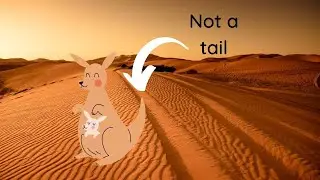This Sex-Bending Rainbow Fish Poops Sand While Saving Coral Reefs
The Parrot Fish are a family of about 95 fish native to the Indo-Pacific region. I say “about” 95 species of fish because their variation in bright and colorful scales makes classifying the Parrot Fish a nightmare.
It’s these scales in part, that give the Parrot Fish their name. They’re bright like a parrot’s feathers. But their teeth are also bunched together in a way that forms a parrot beak-like shape, which they use to scrap algae off of coral.
These algae scrapping beaks are what makes parrot fish so valuable to the ecosystem. With climate change boiling up our oceans, our coral reef have begun expelling algae at an alarming rate. This is known as coral bleaching. And experts believe that it’ll be this more than anything that ultimately destroys our coral reefs. Parrot Fish are important because they spend 90% of their time eating the algae, which they poop out later as a combination of sand and undigested coral. There aren’t enough parrot fish living in the wild to combat the effects of coral bleaching. This is partly due to the high rate of coral destruction, but also because they’re a famous delicacy in many Caribbean and Pacific countries.
Parrot Fish used to be reserved for the Philippine royalty but in recent years, their consumption has been greatly commonized.
The Parrot Fish have a complicated life cycle and everything I say will be a general rule for the Parrot Fish family as a whole. To reiterate my earlier point, there are about 95 species of Parrot Fish and while there are general rules that most species follow, there are also species with an exception to that rule.
For example, most Parrot Fish start the beginning of their lives as a female and change into a male as they mature. These sex changes are usually accompanied by changes in the colors of the scales. With younger fishes being dull colors like red, brown, or grey. And mature fishes being the more bright and flashy green, blue, pink, yellow, and orange.
But the Mediterranean Parrotfish have some females staying females their entire natural lives. And the Marbled Parrotfish is the only species of the family to not change its sex at all.
All of these changes in sexes and changes in colors as well as an ability to temporarily mimic other species’ colors that I don’t have the time to get into right now has made classifying Parrotfish a complete nightmare. In fact, early biologists studying the Parrotfish family initially thought there were as many as 350 different species. Which is about four times the actual amount.
Even today, estimates on the number of different Parrotfish species is unclear, ranging from 80 to around 95.


















![These Commons Fruits Aren't Actually Vegan [AKA] why lemon water isn't vegan water](https://images.videosashka.com/watch/PGjsSt0PGMw)












